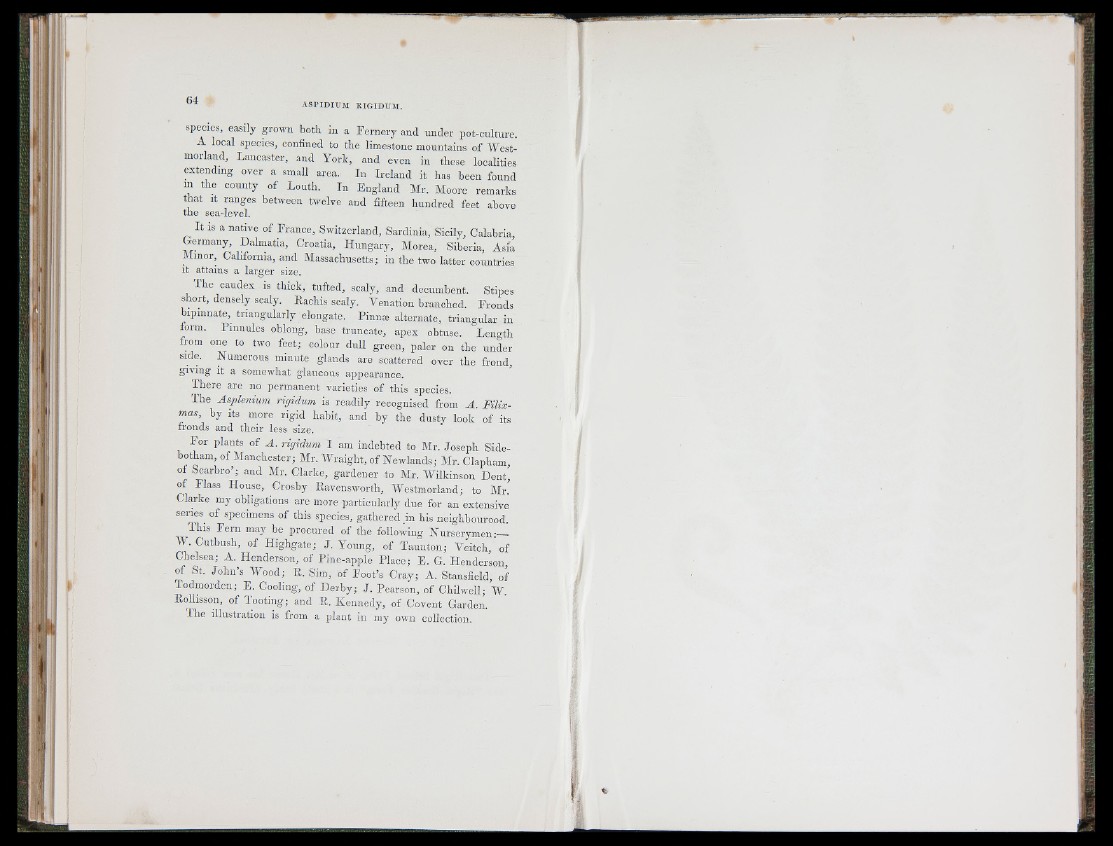
species, easily p-own both in a Fernery and under pot-culture.
A local species, confined to the limestone mountains of Westmorland,
Lancaster, and York, and even in these localities
extending over a small area. In Ireland it has been found
m the county of Louth. In England Mr. Moore remarks
that I t ranges between twelve and fifteen hundred feet above
the sea-level.
I t IS a native of France, Switzerland, Sardinia, Sicily, Calabria,
Germany, Dalmatia, Croatia, Hungary, Morea, Siberia, Asia
JMmor, California, and Massachusetts; in the two latter countries
It attains a larger size.
Ih e caudex is thick, tufted, scaly, and decumbent. Stipes
short, densely scaly. Eachis scaly. Venation branched. Fronds
bipinnate, tnaiignlarly elongate. Pinnæ alternate, triangular in
form. Pinnules oblong, base truncate, apex obtuse. Length
Lorn one to two feet; colour dull green, paler on the under
side. Numerous minute glands are scattered over the frond,
giving It a somewhat glaucous appearance.
There are no permanent varieties of this species.
The Asplenium rigidum is readily recognised from A . Filix-
mas, by its more rigid habit, and by the dusty look of its
fronds and their less size.
For plants of A . rigidum I am indebted to Mr. Joseph Sicle-
botham, of Manchester; Mr. Wraight, of Newlands; Mr. Clapham,
of Scarbro’; and Mr. Clarke, gardener to Mr. Wilkinson Dent,’
of Flass House, Crosby Eavensworth, Westmorland; to Mr.
Clarke my obligations are more particularly due for an extensive
senes^ of specimens of this species, gathered in his neighbourood.
This Fern may be procured of the following Nurserymen;—
W. Cutbush, of Highgate; J. Young, of Taunton; Veitch, of
Chelsea; A. Henderson, of Pine-apple Place; E. G. Henderson,
of St. Jo h n ’s Wood; P . Sim, of Foot’s Cray; A. Stansfield, of
Todmorden; E. Cooling, of Derby; J. Pearson, of Chilwell; W.
Eollisson, of Tooting; and P . Kennedy, of Covent G a rd e !
Ih e illustration is from a plant in my own collection.
II